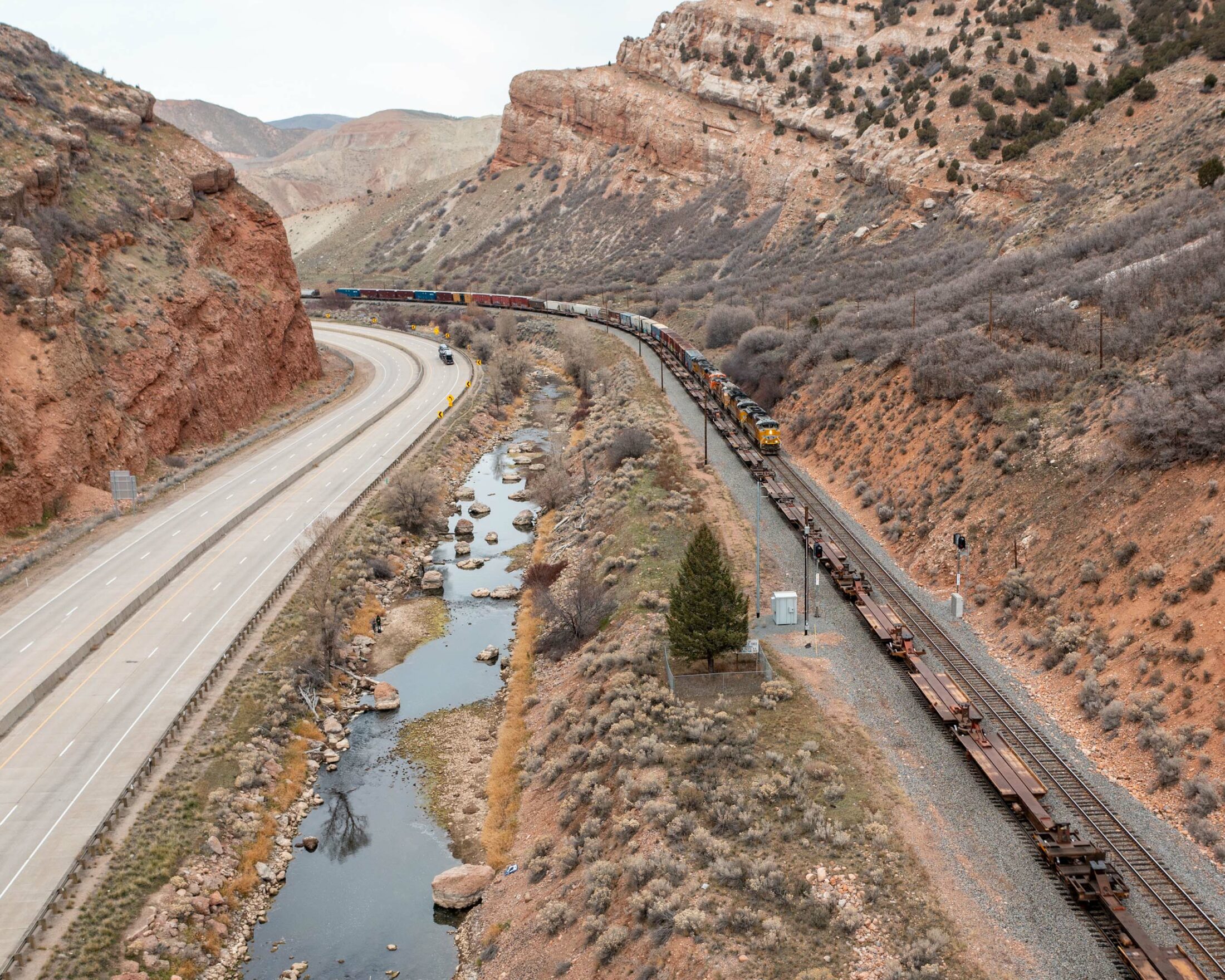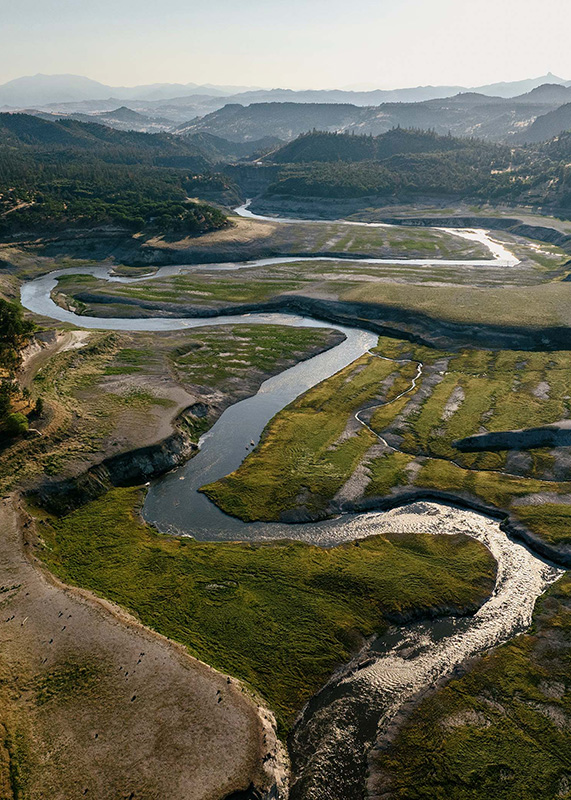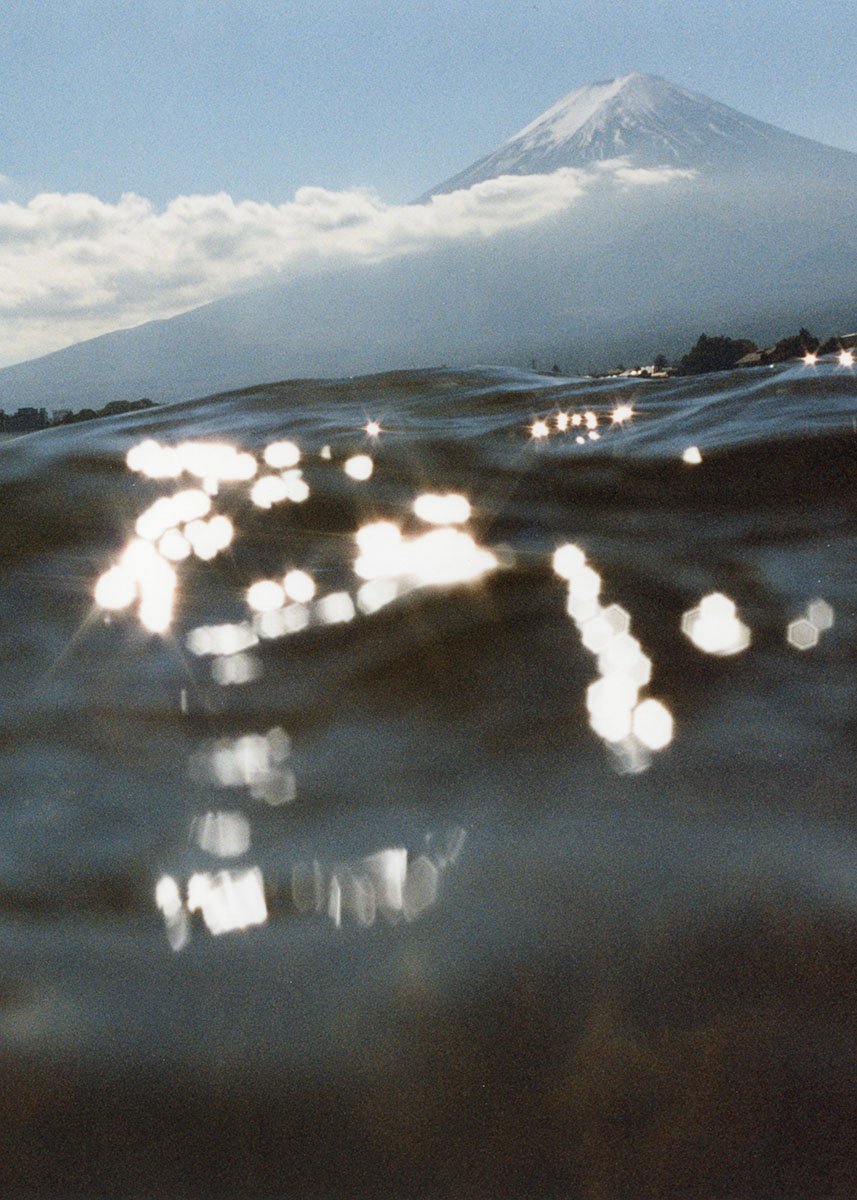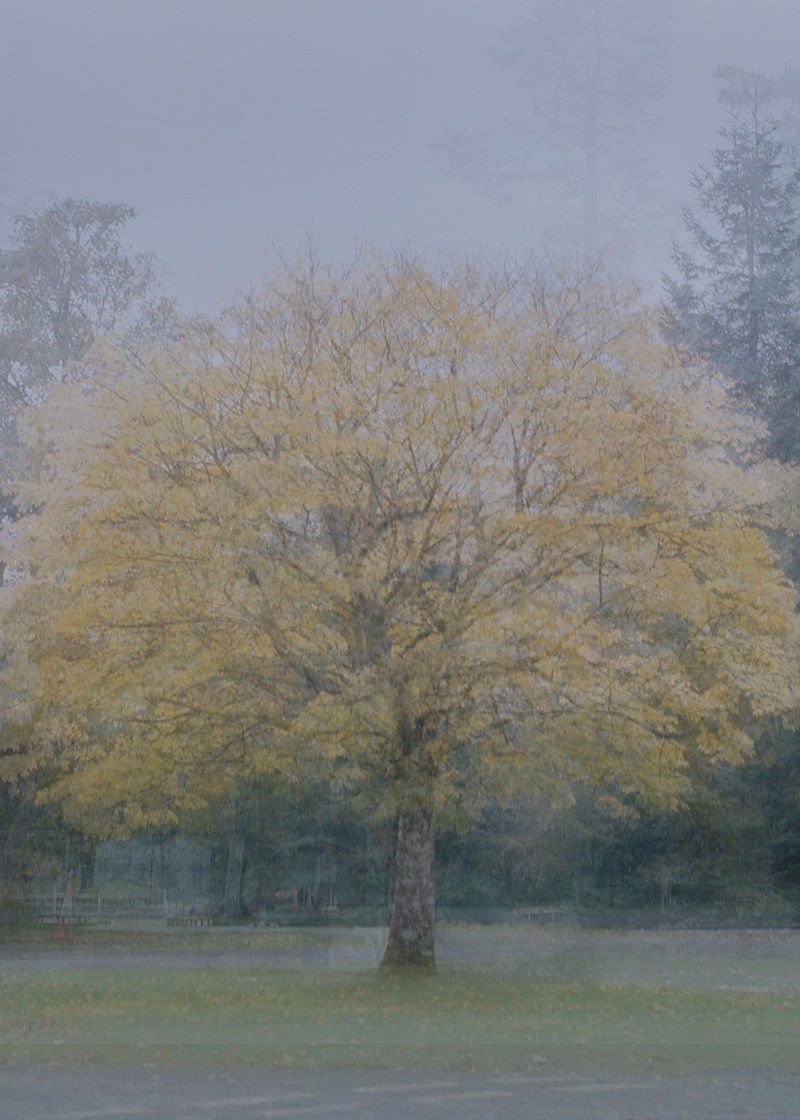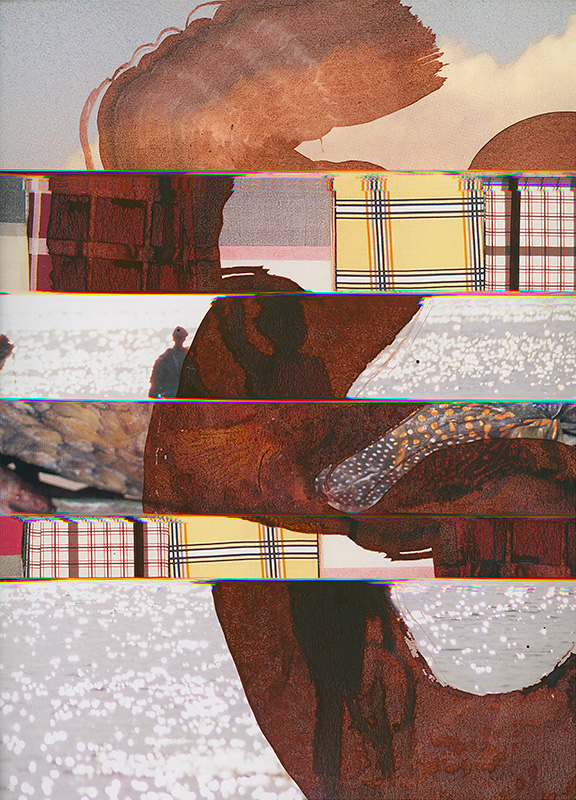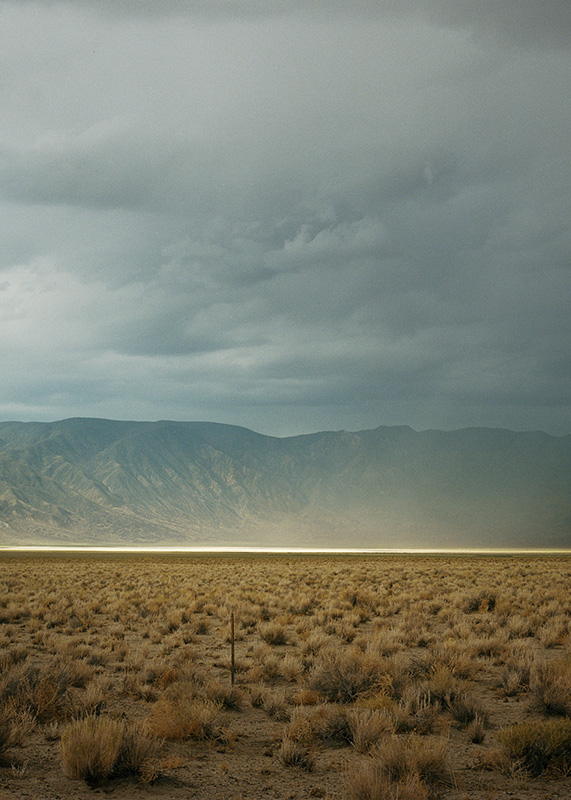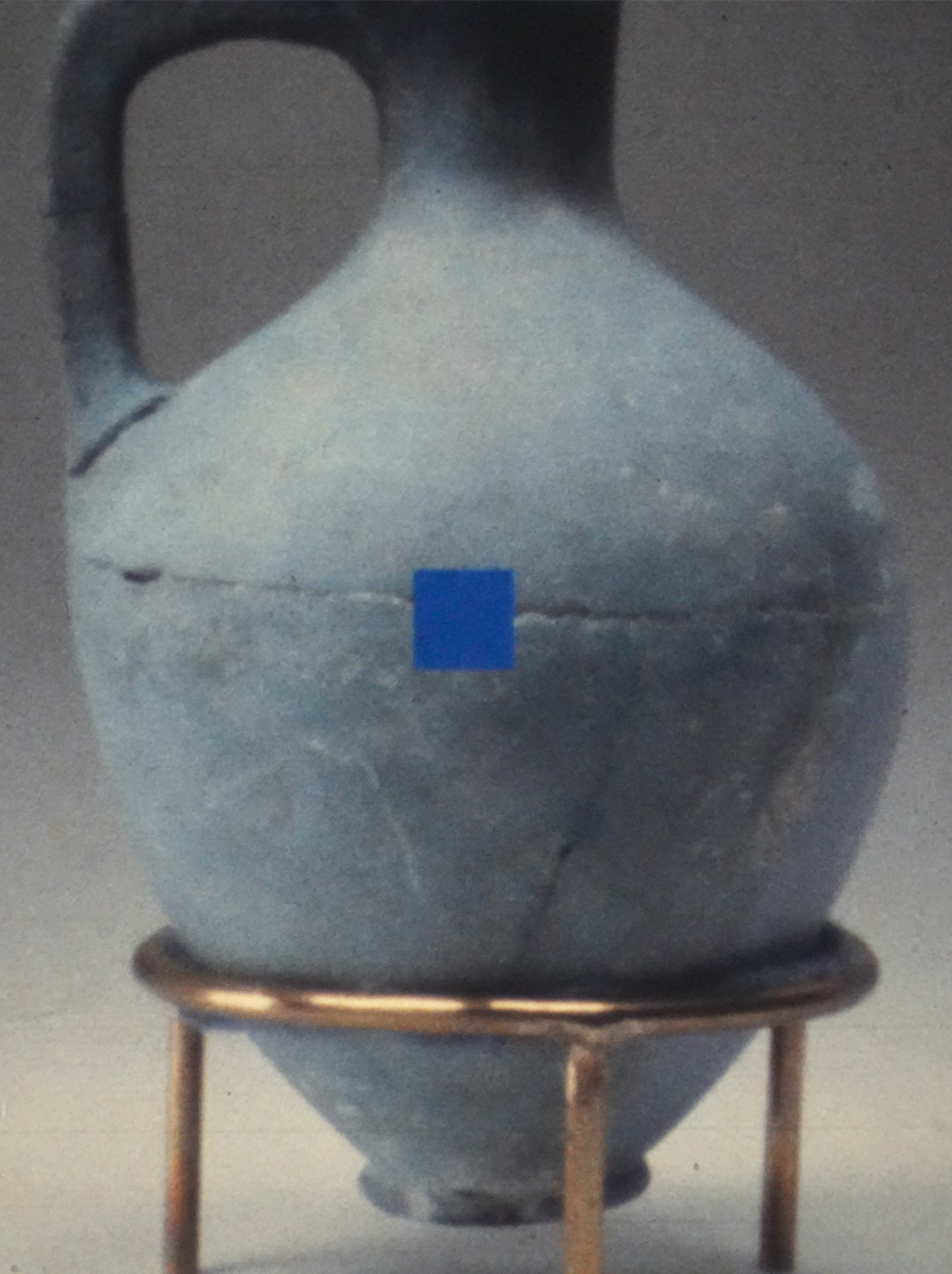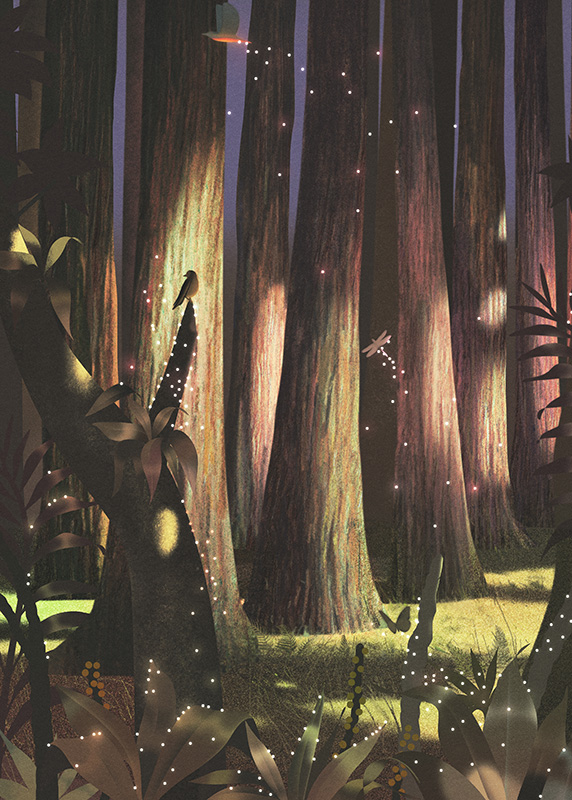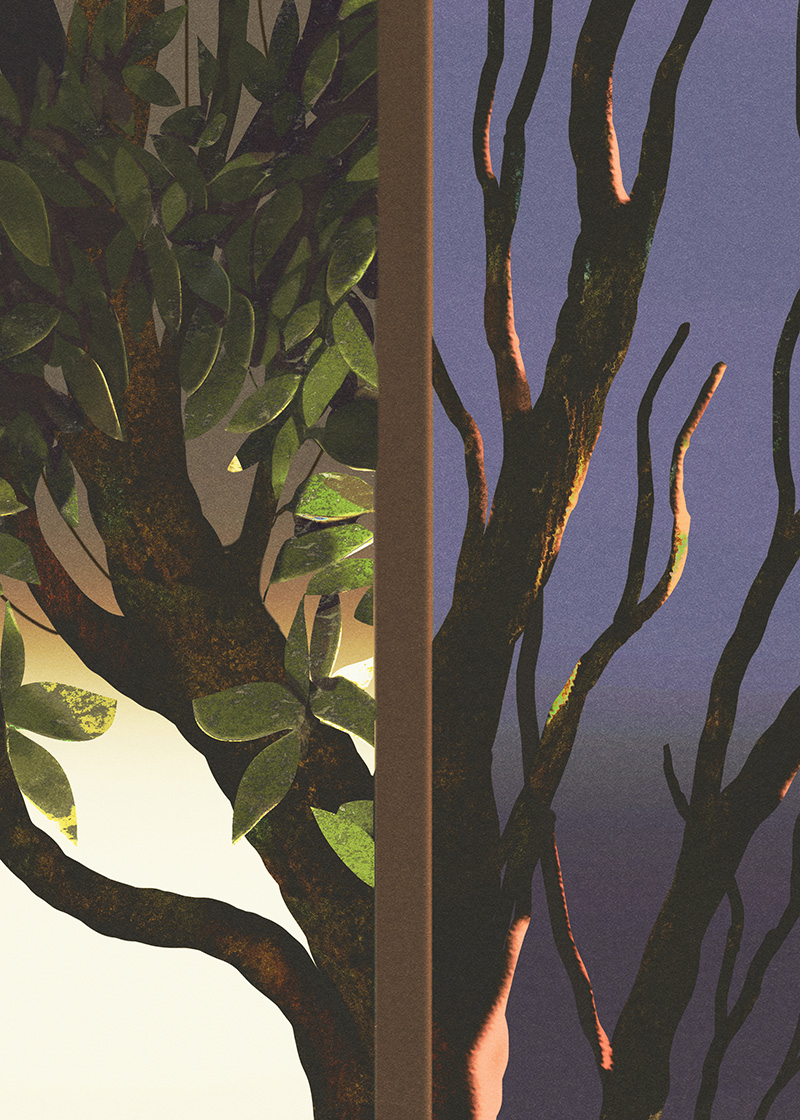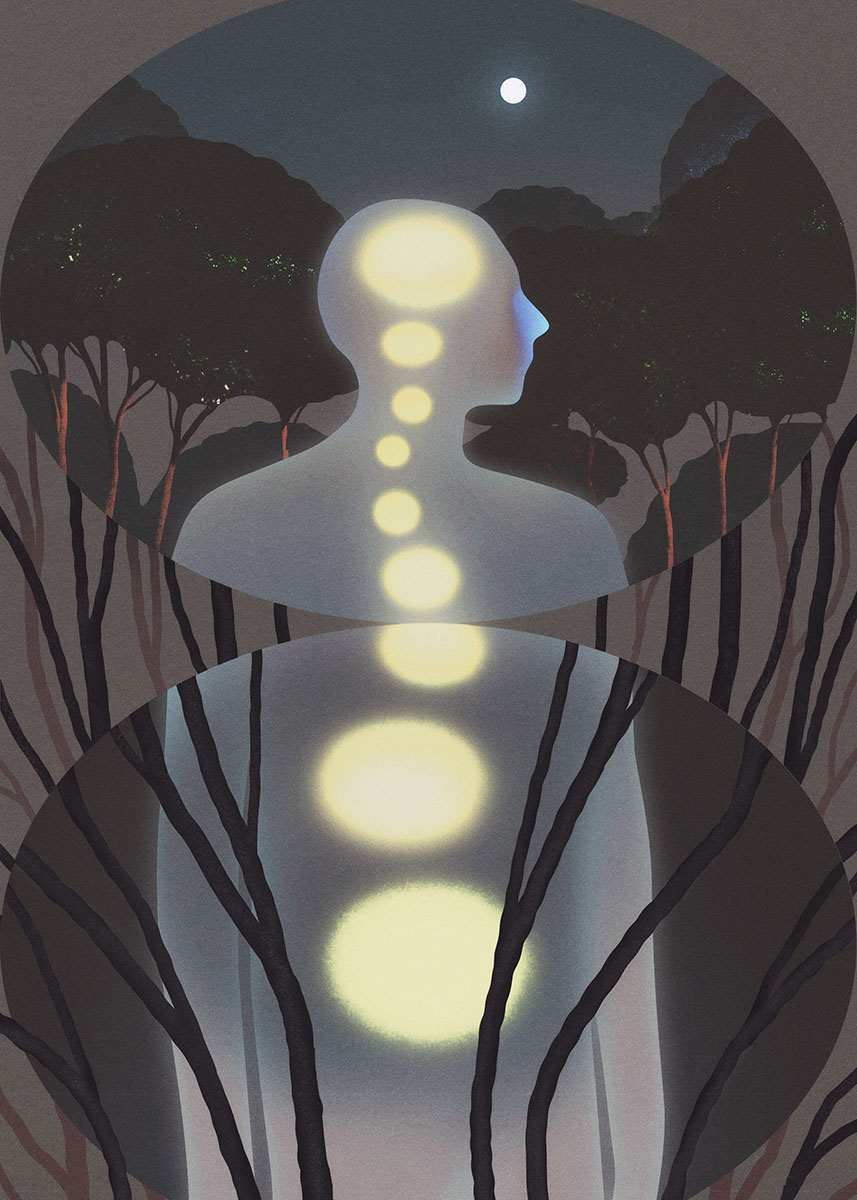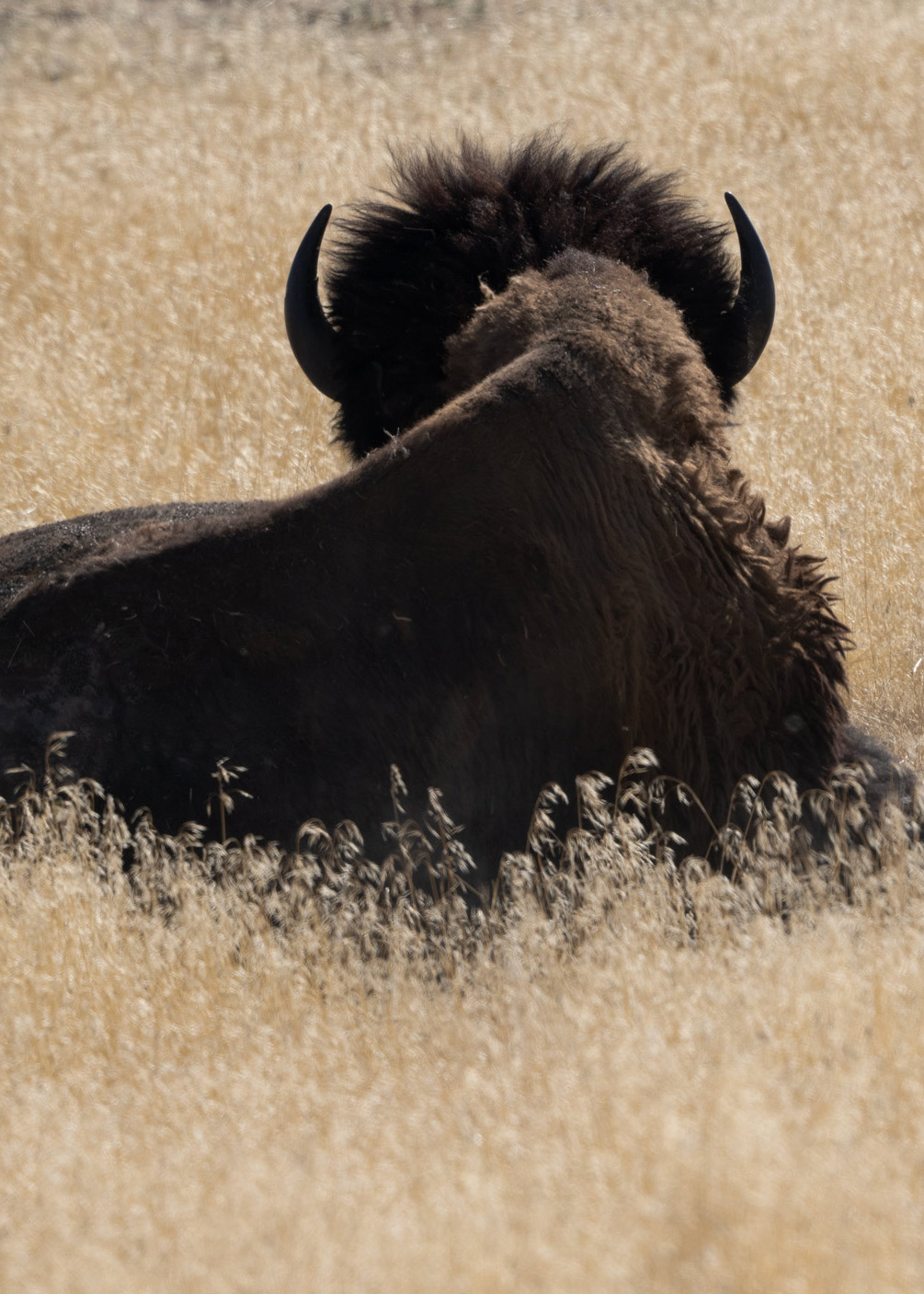
Daegan Miller is a writer, critic, and landscape historian based in Western Massachusetts. He is the author of This Radical Land: A Natural History of American Dissent, one of The Guardian’s Best Books of 2018 and a LitHub Favorite Book of 2018. He earned his MA and PhD from Cornell University and is the recipient of an A.W. Mellon Postdoctoral Fellowship in the Humanities at the University of Wisconsin–Madison. His writing has appeared in Guernica, Places Journal, Los Angeles Review of Books, and North American Review.
Brent Mathison is a photographer and alternative process artist based in Massachusetts. His photographs have been exhibited throughout New England and primarily focus on the natural and human-made landscape. He uses a variety of photographic methods and printing processes to bring attention to the details of our everyday world.
On a visit to the tree that marks the thousandth westward mile of the Transcontinental Railroad, Daegan Miller considers how our historical landmarks have shifted in meaning, leaving us adrift and disoriented in the Anthropocene.
It is difficult to undo our own damage, and to recall to our presence that which we have asked to leave.
Annie Dillard, Teaching a Stone to Talk
We are of the shadows. Not for us the resolution of old night, nor the revelation of high noon. Of the shadows, but on the banks of a river that has spent ages slowly carving a canyon through a range now called the Wasatch before spilling into the flats of the Great Basin, which hems its dozens of wandering rivers in. None ever make it to the sea. We are on the banks of the Weber, a White name given, about two-hundred years ago, to the flowing water at our feet; this Weber River never reaches the ocean, either, and instead, it shimmies its way northwest from where we stand, then skirts the small city of Ogden, forty miles north of Utah’s capitol, to eventually mix its snowmelt with the old brine of the Great Salt Lake, from where it will ascend back to the country of clouds.
The photographer Brent Mathison and I have come a long way to stand on these banks, chiseled down deep in Weber Canyon. We’ve come a long way to visit a tree, meet a wandering angel, and find out if the landmarks have any direction left to give.
It wasn’t difficult to get here. Mathison and I flew from Boston to Salt Lake City, set up camp in one of Ogden’s cheap motels, and then steered our rented Toyota Corolla east on I-84, toward Cheyenne, past Ogden’s sprawl, over the screaming concrete roadway, and through the Wasatch’s fingers. A valley appeared in front of us, palming small Utahan towns: Mountain Green, Enterprise, Morgan. On we drove, passing ranches and shoddy ski chalets and, as we sped into Weber Canyon, gravel operations chewing through the mountains so that cities may have cement. The interstate hugged the canyon’s walls, sharing the narrow strip of flat land with the river and the steel-gray dual tracks of the Union Pacific Railroad. We drove until we slid to a stop at a dirt pull-off at the canyon’s head, in a small river bottom where the mountains back off just enough for a few irrigated fields and the fifteen-block town of Henefer.
I have spent years gazing longingly at three stereographic photos, taken in 1873, of a tree called the Thousand Mile Tree, which grows not far from where we park. We walk toward it, downstream, through waist-high clumps of sere bunchgrass and silver-green sage, shoulder-to-shoulder with the galvanized guardrail that separates us from the throaty eighteen-wheelers steaming down the four-lane interstate—Savage, Legend, Amazon—trying not to slide down the steep slope on our right that slips into the Weber, which is now whispering at its November low-flow, green and midnight.
We’ve come a long way to visit a tree, meet a wandering angel, and find out if the landmarks have any direction left to give.
Rain is in the forecast, but right now the skies are blue.
It feels odd to be here, in a landscape that I’ve seen hundreds of times before, but only in a gold-toned albumen photograph that predates my birth by more than a hundred years, as if I’ve fallen into someone else’s memory. For as long as I can recall, I have felt as if certain photos were drawing me—the texture of light playing on sensitive grain, the sharpness or fuzz of the lines setting a figure off from its surroundings, the illusion of deep space in a flat field, and the way a slice of time seems to live forever—as if photos had volition, “as if the pictures had a memory of their own and remembered us,” as W. G. Sebald put it in Austerlitz. Though “photograph” means “sun drawing,” giving the light all the agency isn’t quite right. Whatever a photo has to show is to be found in the shadows, where things dissolve into each other.
We don’t see it until we emerge from beneath a dormant willow’s bracken-like form, and then, there it is: a dark silver-green Douglas fir on the bank opposite ours, just as it was in January of 1869, four short months before the Transcontinental Railroad was finally completed, when a westering gang of Union Pacific Railroad track layers spiked their thousandth mile of rail at the foot of a beautiful tree. They named it the Thousand Mile Tree, and it became a sylvan celebrity, photographed, lithographed, sketched, painted, and penned breathlessly throughout the second half of the nineteenth century because it seemed to point the way to a place many Americans were desperate to reach, a place far from the memory of the Civil War.
More than 600,000 American soldiers had shot each other apart between 1861 and 1865, and in the great silence that followed, the country scrabbled for anything that would give meaning to the butchery. But fact failed—what can more than half a million violent deaths possibly mean? So did art. “The real war,” wrote Walt Whitman, the poet who once thought that the country could be held together with leaves and grass, “will never get into the books.” The barbarity was too awful: “think how much, and of importance, will be … buried in the grave, in eternal darkness.”
And so, many Americans turned to myth, to the vision of divine destiny that had enchanted New England’s earliest English settlers. John Winthrop, one of the founders and leaders of the Puritans’ Massachusetts Bay Colony, famously wrote in 1630 that his settlement “shall be as a Citty upon a Hill, the eies of all people are upon us.” Though the Civil War had threatened the country’s foundation, the city upon the hill yet stood. Didn’t that mean the eyes of the world saw not failure, but fortitude? Triumph, even? That God, who was known to ask for wrenching shows of commitment from his followers, not only had not withdrawn his help, but had been pleased with the offering of all those Isaacs and had blessed his chosen people, White Americans, with a country for the taking?
There’s a name for this faith—Manifest Destiny—and it was the story that seemed to make everything make sense, at least to many. The country had been tested, and as a reward its borders would spread from sea to sea, according to God’s will, and driven by the steam engine.
Even before the war was finished, two companies, the Union Pacific and its counterpart, the Central Pacific, which worked its way east from Sacramento, began the work of laying rails across the continent, work that would remake the country. Labor came from wherever human muscle could be bought cheaply: desperate Irish immigrants fleeing famine at home, Chinese and Mexican workers hired into what labor organizers of the time recognized as debt peonage, and, after the war, drifting former soldiers and recently freed slaves. All those laborers had to be fed, and so the buffalo hunters went to work. Every mile of rail rested on almost 2,500 wooded ties, and so the loggers sharpened their saws and put keen edges on their axes. Progress wanted to roll smoothly, and so every gully was filled and every grade leveled with gravel picked and carted from the surrounding hills, scars that are still deep today. The federal government gave each corporation up to twenty square miles of land for each mile of track laid down; the two companies wound up owning duchies as large as New Hampshire, New Jersey, and Maryland combined. Though that land wasn’t the government’s to give, Paradise beckoned, and so the politicians went to work: “The United States shall extinguish as rapidly as may be the Indian titles to all lands … required for the said right of way,” read the Pacific Railway Act of 1862.
By 1869, the two corporations had finally finished their work connecting the coasts, and for those who dreamed of pistons and timepieces, this was wonderful. It wasn’t just that a person could board a train in New York City and arrive in San Francisco only a week later, but that American capital, American technology, and American ingenuity had figured out a way to make the world smaller, less complex, less wild, more easily known and controlled and pocketed as hard American cash, as if steel and steam and land and profit were balms for slaughter. A few hours before the last transcontinental spike—a golden spike—was hammered home, the gentlemen of New York City’s Chamber of Commerce sent a telegram to their wealthy colleagues in San Francisco. “In grateful thanksgiving to Almighty God, the Supreme Ruler of the Universe,” it read:
The new highway thus opened to man will not only develop the resources, extend the commerce, increase the power, exalt the dignity and perpetuate the unity of our Republic, but in its broader relations, as the segment of a world-embracing circle, directly connecting the nations of Europe with those of Asia, will materially facilitate the enlightened and advancing civilization of our age.
God had once sent an olive branch to Noah to signify that the shores of a new world lay waiting. Many Americans thought he telegraphed the same signal in 1869, only this time with an evergreen growing in a canyon alongside a river in the Wasatch Mountains that told his chosen people paradise had been regained. But that was all long ago, and the tree has been forgotten.
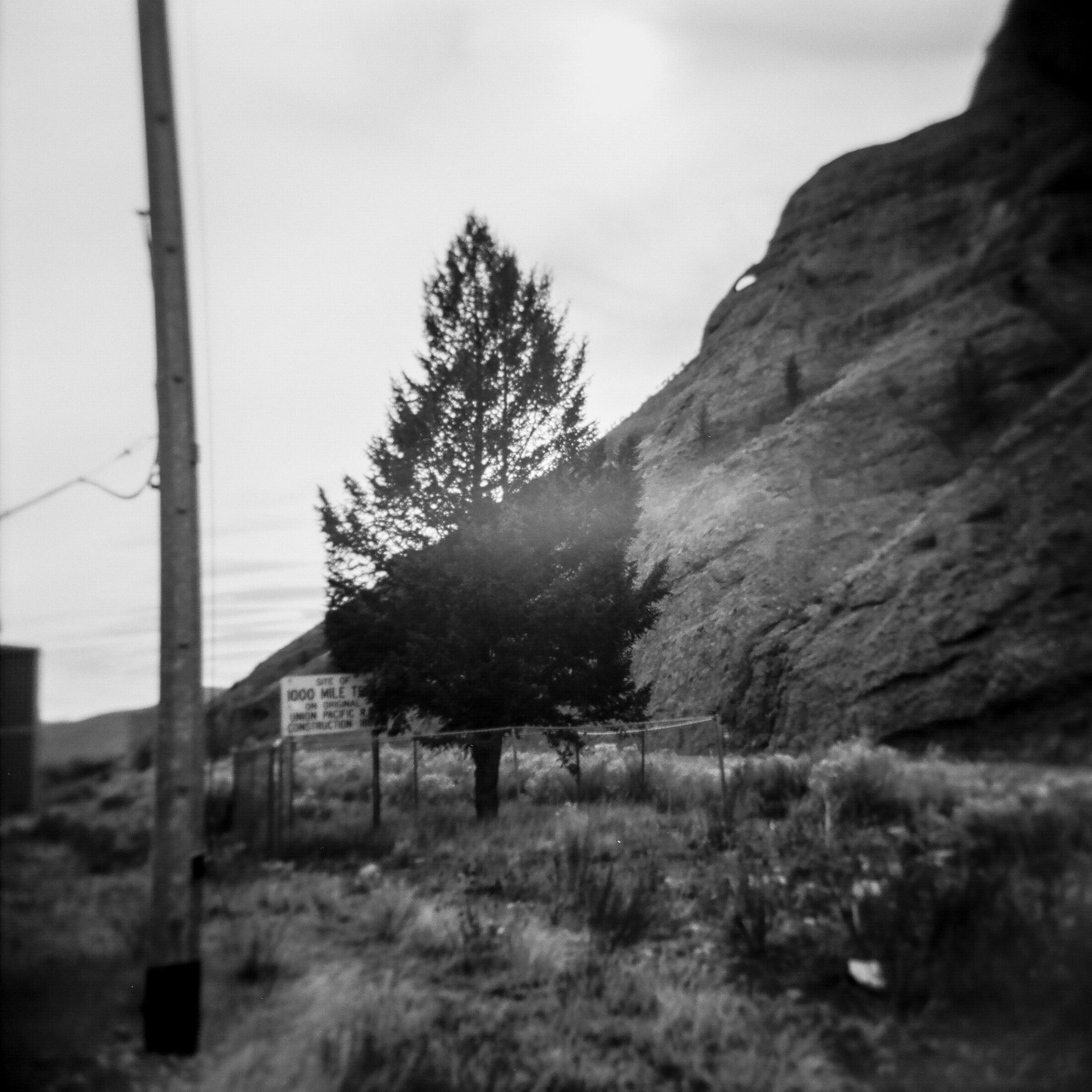
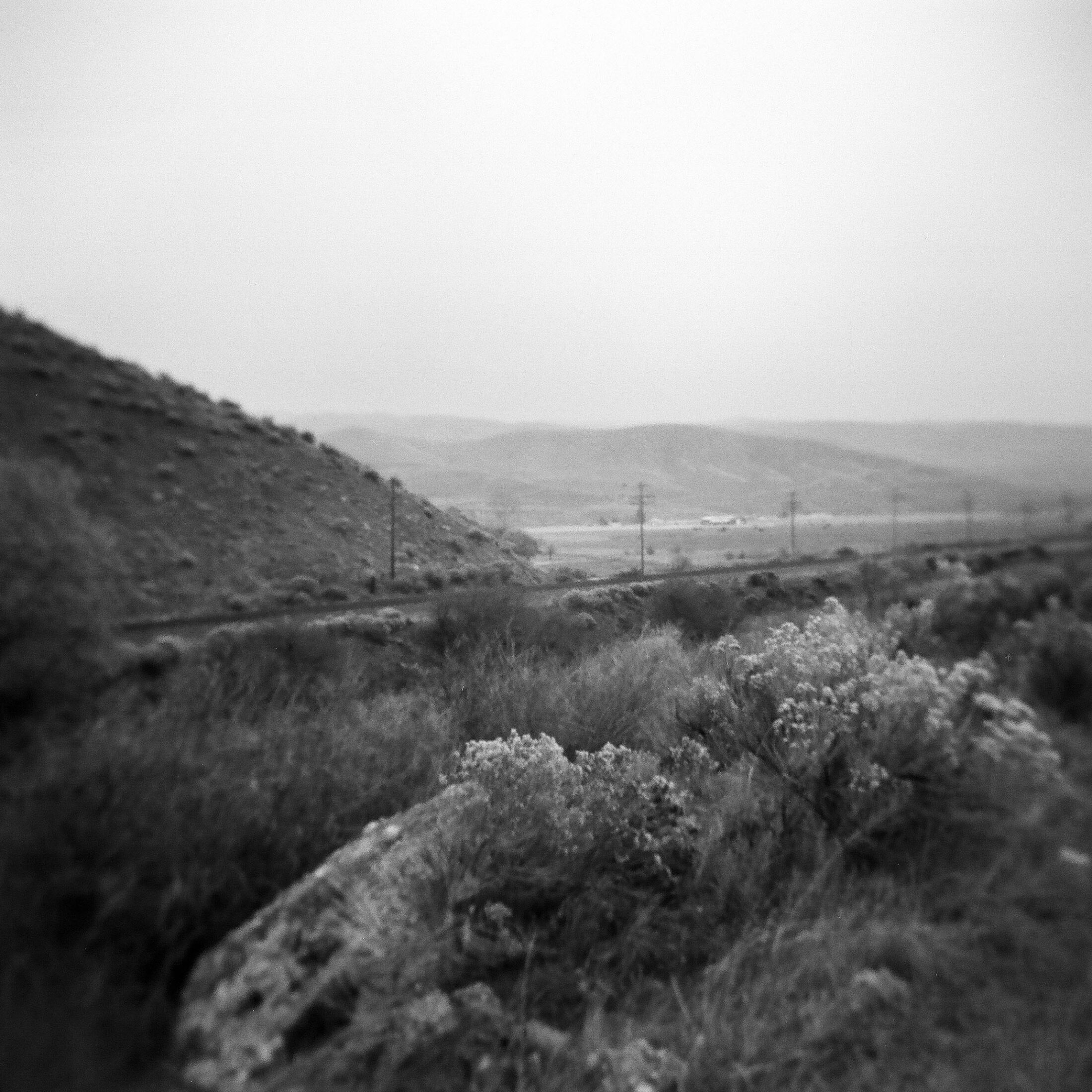
When Mathison and I finally reach the Thousand Mile Tree, an eastbound Union Pacific train 154 cars long idles in its shade. “Building America” goes the company’s logo. We walk on until we stand directly across the river from it, then pick our way down to the Weber’s bank, from where we have to rock our heads back onto our shoulders to take the tree in, an action that magnifies its modest height.
It feels good to be dwarfed by something living, a brief green exclamation point in the dull-gray, low-level anxiety that seems to hang like a blinding, bad smog around the edges of my waking days. Its triggers are everywhere: Salt Lake is lower than it has ever been in recorded history, shrunken to almost half of its 1847 level. This is the general state of water in the western US, which is suffering its worst drought in at least 1,200 years for the same reasons that the glaciers are melting and ice sheets collapsing, sea levels rising and oceans acidifying, tundras muddying, forests desiccating, and extinction galloping—the list of losses grows endlessly longer every day, touching every facet of life on Earth. It’s hard to know how to make sense of such rapid, saturating planetary change, and facts alone won’t do it: they have never been able to make sense of anything. That’s the job of stories—we tell them to ourselves in order to live—but they can’t keep pace. And so, the anxiety; because stories are maps, a string of landmarks that tell us where we’ve been and point the way home. They make the world cohere, but our world has come resolutely unstuck from the bearings we have attempted to set. It’s all but certain that next year will be hotter than this one, and the following year hotter still, but to what end? A story needs a conclusion: without one, it’s just a bundle of directionless sentences, each a lone landmark signifying nothing but itself.
The cold down here next to the Weber is keen, even though the canyon is catching full its few hours of late-fall light. Ice skins the river, which has been patiently eroding rock geologists call Weber Canyon Conglomerate, a jungle of clastic wreckage tens of millions of years old—the past has a passionate red hue out here. I huddle closer to the water, out of the wind’s way, looking at the leaved layers of time, drawn by the river’s sparkle, by the sound it makes running over stones it has spent ages rounding. “Shhhhhhhh,” the river whispers as it tumbles past, eddies, and returns.
In the fall of 1873, a photographer came to this river and stood in the tree’s shade. He called himself Eadweard Muybridge—though that’s not the name he was born with—and he stood, not more than twenty feet from where I now rest, with his stereographic camera. With it, he would make three views of the Thousand Mile Tree.
Muybridge was on commission, hired by Leland Stanford, president of the Central Pacific Railroad, one of the capitalists financing the Transcontinental Railroad, and among the richest, most powerful men in the US, with race horses, politicians, and a university all in his back pocket; Stanford had hired Muybridge to photograph a long, sublime section of the recently completed transcontinental route: a 720-mile stretch from Donner Lake, California, over the Sierra Mountains, across the basin and range, through the white knuckles of the Wasatch, and on to Castle Rock, Utah—now a ghost town. The 144 stereographic scenes that Muybridge made with his binocular stereo camera were supposed to be incontrovertible visual evidence that the American landscape was beautiful, exceptional, divine, and had been thoroughly mastered by American business and the men who ran it.
But something went wrong. The story wouldn’t quite cohere, as if the scene had its own desires, had another tale it wanted to tell.
The first two stereos of Muybridge’s are fairly conventional, though not without their oddities—a stray tomahawk in the first catches the sharp eye; a weirdly isolated, distant figure strides out of the western horizon in the second. But it’s the last of the three, number 821, Thousand Mile Tree, 1000 Miles West of Omaha, Looking East, that brought Mathison and I to Utah.
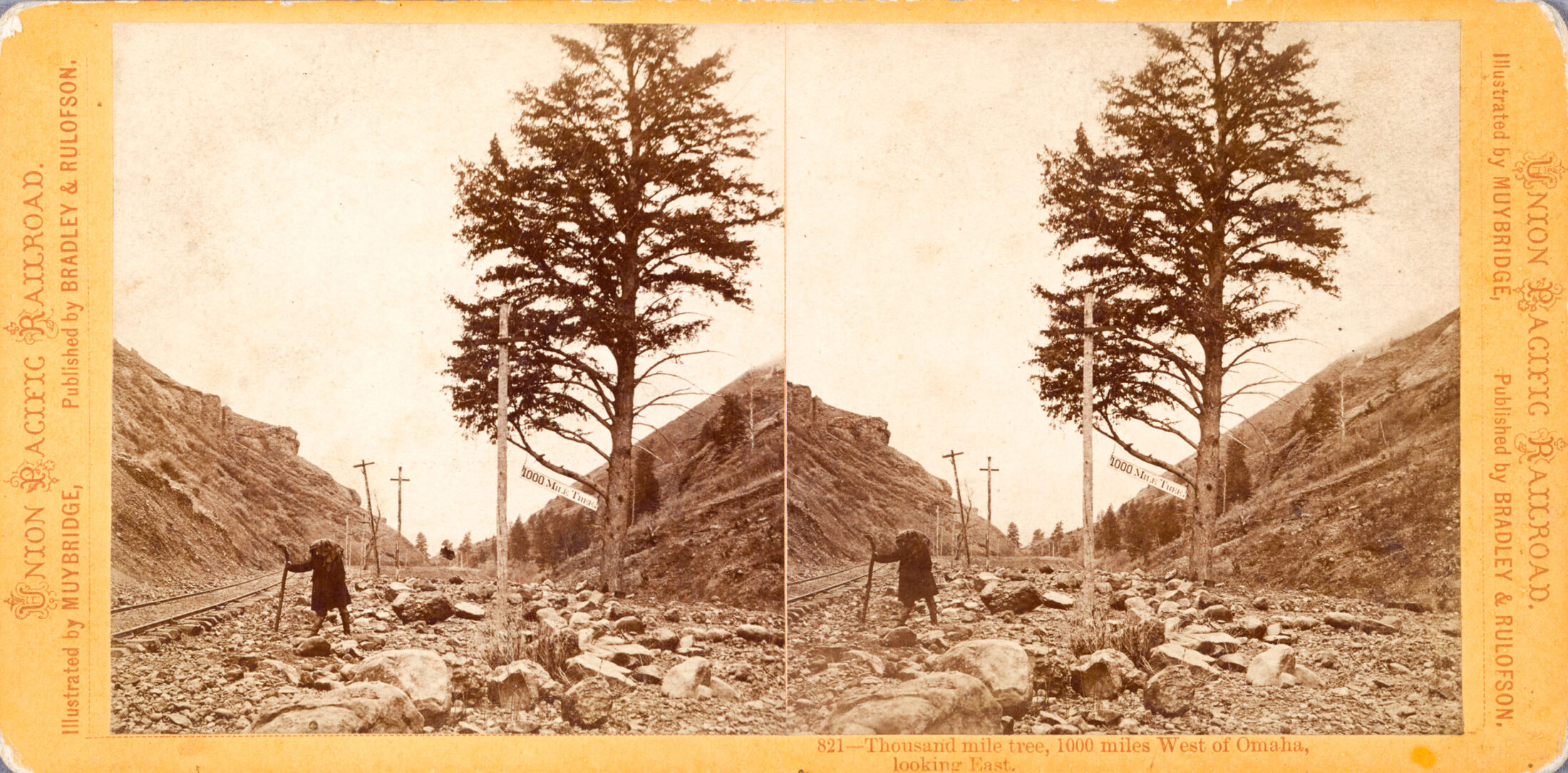
Stereographic photograph of the Thousand Mile Tree, by Eadweard Muybridge, 1873.
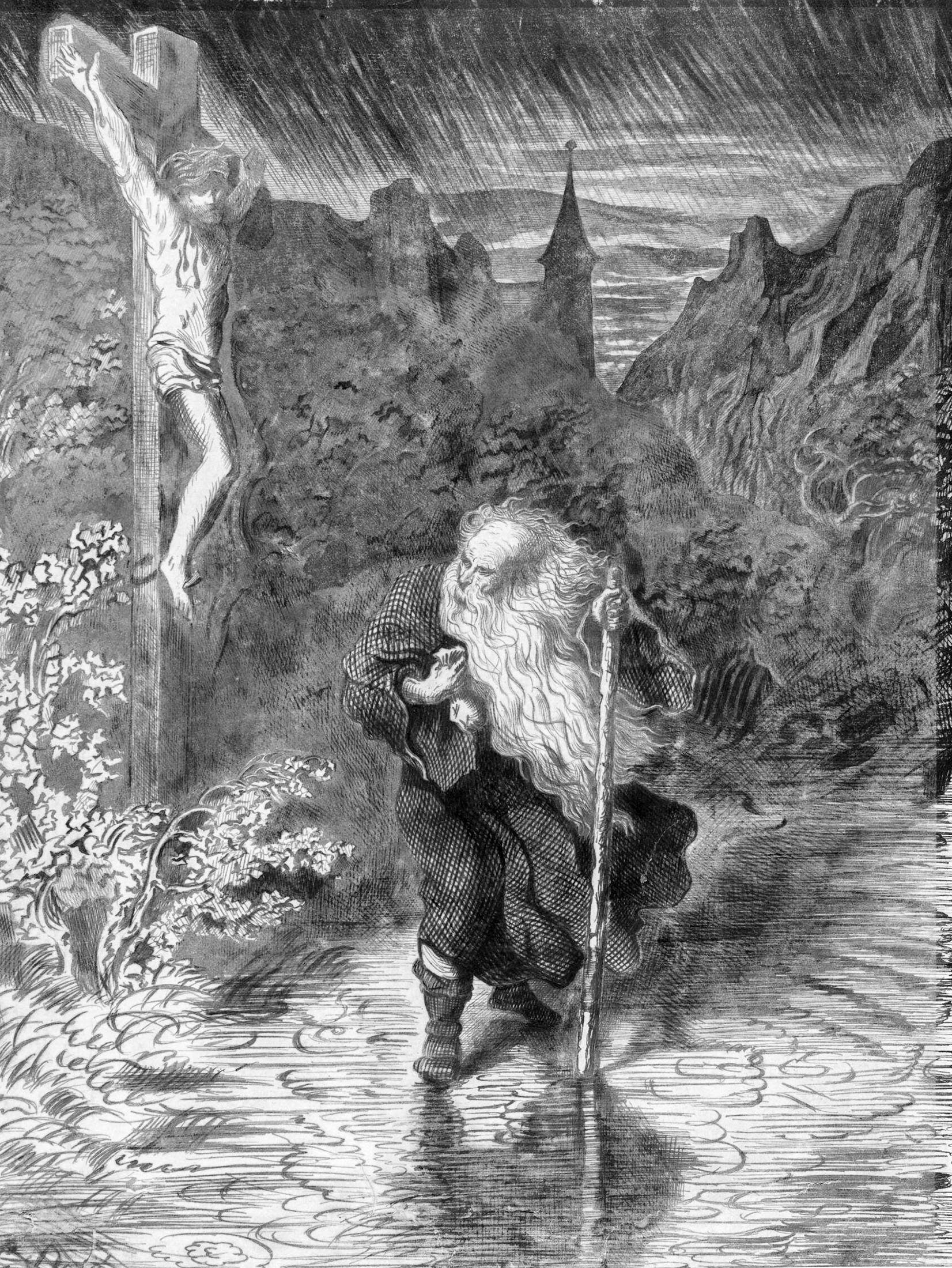
Illustration by Gustave Doré for The Legend of the Wandering Jew, 1856.
It’s an off-kilter shot, and tense: the pitiless bright sky is a radiant void filling nearly two-thirds of the frame, while drunken, cruciform telegraph poles stumble off into the distance, as if the rubble-strewn ground can’t be trusted. The tree has lost its crown. It, too, slouches, and its trunk almost dissolves indistinctly into the tones of the hill behind it. A slim, vanishing tick of tracks along the picture’s left is the only sign of the railroad, but it’s no more than an afterthought, because the periodic gravity of the stereo ebbs and flows between the brightly lit, declarative sign announcing “1000 Mile Tree” and the dark, odd, shadowed figure, hunched in his enormous coat, a staff in his right hand and a load on his back, who has turned full towards the camera—towards us, watching us, expectantly, as we watch him—a shadow who looked into Muybridge’s lens for a moment that has yet to end.
Photos are strange: inert and inanimate, yet we often treat them as if they’re almost alive. “This is my love,” we’ll say to a stranger as we press upon them a photo of a child or partner or puppy; “here I am,” pointing to a photo taken while on vacation. They call to us. We’ll risk our lives to save family photos from fire or flood, gaze longingly at the photo of a long-dead friend. Like all living things, a photo will have its desires, but since its lifespan dwarfs that of a human, its longing can go unmet for ages. After all, it has been 149 years since Muybridge made this photo, and Mathison and I have come a very long way to sit on a cold fall day on the bank of a river squeezed between an interstate highway and railway—because it beckoned.
Muybridge knew that Stanford wanted a triumphal photo. But he also knew that photos have wills of their own. On that fall day in 1873, the photo refused to stick to the script. It wanted something else.
“Follow me,” says the lone figure in Thousand Mile Tree. “Follow me: I have another story to tell you.”
It’s one of the old tales, dating back to at least the thirteenth century: the legend of the Wandering Jew. Muybridge would have known it. The story was wildly popular in the US in the nineteenth-century, especially the version with the engravings by the renowned artist Gustave Doré, one of which is clearly kin to Thousand Mile Tree.
The basic plot Doré retells is one of thoughtlessness and revenge: Jesus, on his way to crucifixion, fell exhausted at the foot of a man. Most versions name him Ahasuerus, though Doré calls him Cartaphilus. “Go on faster,” the man says to Jesus. And Jesus replied with a curse: “I go, and thou shalt wait till I return.” Doomed to everlasting solitude, the man wanders the earth, unable to rest, unable to die, bound to watch every familiar landmark crumble, every life wither, until the end of time, when Jesus comes again to judge the quick and the dead.
But like any centuries-old story, this one has its own complex history and draws on a rich tradition: think of the wanderer, Cain, son of the wanderer, Adam, father of all the wandering humans who are trying to find their way back home; or Moses, leading the exodus from Egypt, or all those saints wandering in the wilderness. There was also a fascination, even a grudging respect: for thousands of years the Jews navigated according to their faith, never losing their way, despite constant persecution and rootlessness. All this rich history helped to birth an alternate version, this one a tale not of revenge, but of desire and its consequences. In this telling, the Wanderer’s name is Cartaphilus—“dearly loved,” as George K. Anderson wrote in his classic scholarly text on the history of the legend. Some versions have it that Cartaphilus was Jesus’s beloved disciple whom Jesus could not bear to let die and who then spends eternity wandering the earth, bereft, awaiting Jesus’s return. Immortality, in this version, is an ambiguous consequence of a love that, in cheating the inevitability of death, broke the natural flow of time, setting the beloved adrift.
Anti-Semites have long favored the first version, because it has allowed them to recast the history of Judaism as the story of an inherently criminal people, and, indeed, the legend has been trotted out wherever Jews have been made to suffer. But there’s no reason to let hate lay sole claim to the past—it has stolen enough from us already. As Anderson writes, the modern retellings of the legend vary in how they blend the versions, and many focus less on the outrage done to Jesus than on the pathos of punishment suffered by Ahasuerus/Cartaphilus—what would it mean, to spend one’s life in atonement? How would it feel to wonder what one had done to suffer the curse of perpetual wandering? To wonder how it would all end, and when?
This all seemed uncannily familiar in the nineteenth century, as the experience of modern life came increasingly unstuck from older, traditional, inherited, emplaced ways of knowing the world. Farms fell as cities grew, machines replaced skill, whole families headed west to grow up with the country recently cleared of its Indigenous population and sent messages back home via lightning—via the telegraph. Everything was changing. Everyone was wandering. No one knew where they were going or how the story would end—“all that is solid melts into air,” wrote Marx and Engels in the Communist Manifesto, giving voice to the anxiety shadowing the faith in progress, and the Wandering Jew shows up in much of nineteenth century culture as the representative of the modern condition. “Jewishness,” writes the historian Yuri Slezkine in The Jewish Century, “and existential loneliness became synonyms.”
Perhaps it’s this existential loneliness that I see flowing from Thousand Mile Tree. One of the ironies of the triumph of industrial development was that the US faced its first crisis of homelessness. In part this was fueled by the way that the war shattered people’s psyches. The Civil War was the first war fought on an industrial scale and in which men were efficiently murdered by the thousands, flung into cannon range by the railroads that played a decisive role in moving troops and matériel from battlefield to battlefield.
If you look very carefully into the shadows cloaking Muybridge’s Wanderer, it looks as if he is wearing the brimmed, slouchy forage cap, worn by Union and Confederate soldiers alike, called the “bummer.” Men who wore it were “bums,” and after the war some of these bums wandered the country, hopping trains to get wherever they went; but others tried to reintegrate into the world of urban industry, for Northern triumph in the Civil War meant the triumph of the factory, the shop, and the city—all of which became casualties, in 1873, of the most serious depression yet to grip the nation, which sent unemployment rates skyrocketing: by some estimates, up to 25 percent of all northern workers spent at least three months a year without a paycheck. For urban workers in an age before unemployment insurance, before the automobile, before the internet, looking for work meant riding the rails from one city to another until a job came along. Then there were those, disillusioned by war and disgusted by modern factory life, who hitched out permanently. By the end of the century, their world, which embodied a stark refusal of capitalism’s domestic morality, came to be known as “Hobohemia”—a shifting community of permanent wanderers.
All of this signified a malfunction in the American myth. Manifest Destiny meant nothing without its triumphal conclusion: settling meant a return to Eden, an end to wandering. But the reappearance of the Wanderer—and thousands of real-life wanderers—the reappearance of loneliness beneath a landmark like the Thousand Mile Tree, meant that the story was as yet radically incomplete.
Stories are maps, a string of landmarks that tell us where we’ve been and point the way home. They make the world cohere, but our world has come resolutely unstuck from the bearings we have attempted to set.
“SHHHHHHHH,” the Weber River purls. Everything in the canyon is still. Everything in the canyon is different.
Though I’ve been looking at Thousand Mile Tree for years, I’ve never seen this tree before; this one, with its twinned trunk and scaly burnt-cinnamon bark; this one, only two years younger than I am and which stands a stone’s throw from where I squat: I’ve never seen it because the Union Pacific Railroad cut down the tree in the photograph in 1900, when it streamlined the route cross-country.
A train sighs past—out here, semis sound like locomotives and locomotives sound like nothing but a stiff breeze. “welcome 2 hell,” says the graffiti on its diesel-exhaust-coated lead engine. The slim slip of earth over which we passed to reach the river is cobbled with empty cans of Skoal and Coors and Truly and a beer called Montucky Cold Snacks, spent twenty-gauge shotgun shells, a decaying sheet of plywood and a pink square of foam insulation, bits of tire, glittering red brake-light shards, a mummified road-killed raccoon, and one orange Croc perched rakishly on a boulder. Bleached metacarpals of driftwood scrabble at the bank as the river strides inevitably by.
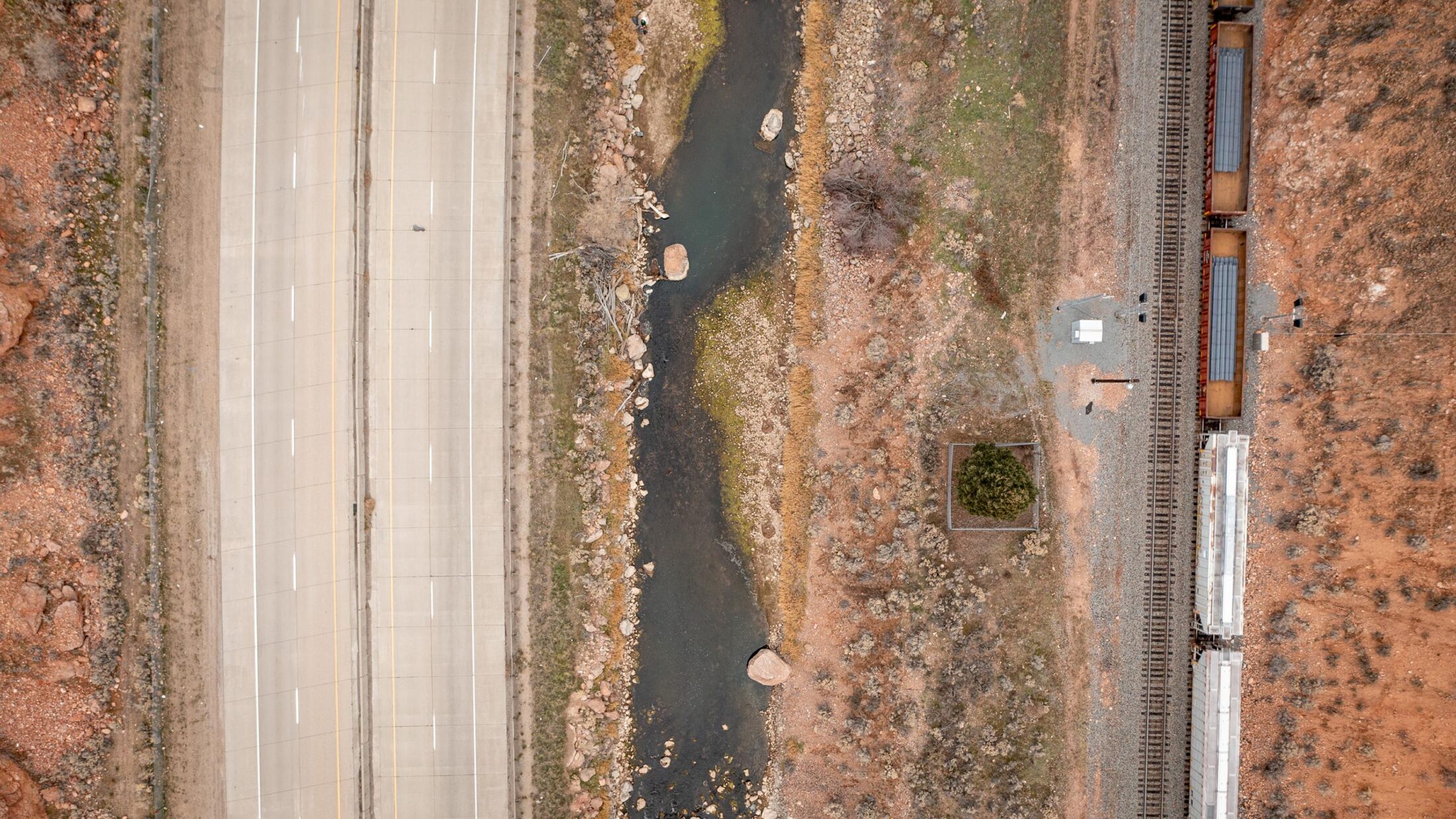
“Go on faster,” said the railroad men, shovel on the coal, fell the forests, gut the mountains, pile buffalo skulls into great pyramids for the fertilizer factories. “Go on faster,” said the railroad men, and so the land was broken for crops that stole the soil’s fertility, only to be replaced by chemicals that bled into streams and ponds and the ocean and our very veins, choking out the life they found. “Go on faster,” said the railroad men, and land was snatched up from whomever had been living there. Here, on the Weber, it was the Cumumba and Shoshone and Ute and Goshute whose land was stolen in the Fort Utah massacre and the Battle Creek massacre and the Grass Valley massacre and the Bear River massacre and the Circleville massacre, but also stolen by treaty and real-estate transaction. “Go on faster,” said the railroad men, and time was brought to heel, in 1883, when the railroads decided to slice the US into four time zones. But over a century later, time has burst its bounds and is having its revenge: the seasons no longer cycle, and today we live in the atmosphere of the Pliocene. Hundred-year events happen every decade; plastic will outlive us all while forever chemicals threaten pregnancy itself. The woods are moving north, the animals that call them home are, too, and human climate refugees flee for whichever border has not yet been closed to the desperate. Those tenuous edifices—our economic, social, and political systems—creak in the storms of too-rapid change, giving rise to panic. No one in human history has ever experienced time like this, a die-off like this, heat like this, or erratic weather like this, and we read newspapers filled with apocalyptic op-eds wondering whether the story, for humans, has come to an end.
Or else we comfort ourselves with nostalgia. Though they cut the original tree down, the Union Pacific replanted another Thousand Mile Tree, a Douglas fir, in 1982, quietly and with no fanfare. They put up a commemorative sign, facing the rails, and stitched a cyclone fence into the earth. No passenger trains run along the Union Pacific’s line, and the freights only have a crew of two. No one, traveling for business or pleasure, will rest their head against the window and watch the Thousand Mile Tree speed past. Nor can it be recognized from the highway, unless you already know exactly where to look and have someone take the wheel for you while you rubberneck. Even if you do happen to know about the tree, it’s hard to get to: there’s no kiosk, no blazed trail. No map. In 1982, the tracks of a digital superhighway were being laid just over the horizon. It was the era of asphalt and air, and the golden age of the rail, of railroad men, was nothing but a faded memory.
I spend a long time, here on the banks of the Weber, watching Mathison as he watches the shadows in this red-rocked canyon, wondering what he sees when he looks at the play of light and dark.
Before he died fleeing the Nazis, the mid-twentieth-century German-Jewish thinker Walter Benjamin wrote of a wanderer, the Angel of History:
His face is turned toward the past. Where we perceive a chain of events, he sees one single catastrophe which keeps piling wreckage upon wreckage and hurls it in front of his feet. The angel would like to stay, awaken the dead, and make whole what has been smashed. But a storm is blowing from Paradise; it has got caught in his wings with such violence that the angel can no longer close them. This storm irresistibly propels him into the future to which his back is turned, while the pile of debris before him grows skyward.
That sense of thwarted desire, of powerlessness and despair in the face of unrelenting decay; that anger: it seems familiar, the condition of the Anthropocene—who among us doesn’t yearn to make whole what we’ve smashed, to piece together the shards we’ve inherited before the wreckage blots out the sky?
Perhaps the condition of our punishment is a great loneliness, an ecological loneliness, cut off not only from each other, but from the marks and stories with which we make of the world a home.
“Go on faster” said the great men who promised us that Paradise awaited at the end of the line, but in a twist of the Wanderer’s tale, it is you and I who have been left to bear the ongoing catastrophe of the Earth’s destruction. Loss, writes Olivia Laing in The Lonely City, “is a cousin of loneliness,” and so perhaps the condition of our punishment is a great loneliness, an ecological loneliness, cut off not only from each other, but from the marks and stories with which we make of the world a home.
For a very long time, I thought that’s what Thousand Mile Tree, 1000 Miles West of Omaha, Looking East wanted to show me: loneliness. But in the solitude of the Weber, I realize I have mistaken pensiveness for loneliness. Though both words share tonal, melancholy shades, pensive is connected through reflection to the word “repent”: to think over the past and feel penitent for one’s role in it. But there’s more, something active in the act of reflective contemplation, something with its own deliberate inertia that resists the inherited cultural imperative to move fast and break things. While we tend to think of thinking as solitary, lonely, even, many thinkers know the pleasure of a mind peopled with memories, images, and ideas. Though thought itself can’t change the world and certainly won’t stop a single grain of sand’s destruction, thinking can help that world come alive—it is a small act of atonement for the thoughtlessness which strips the world of meaning. There’s an anxious desire in pensiveness for communion, too, a reaching out to what lies half-seen in the shadows.
It’s not so much loneliness I now think the photo wants me to see, but its kin, longing: the unmet desire for company. Longing, writes the philosopher Timothy Morton, implies joy, the memory not just of life, but of a meaningful life, a life shared with other beings, a desire to live that life again.
Perhaps the Angel of History is another of the Wanderer’s names: the Wandering Angel, a curator of Earth’s radiant wreckage, each shattered glittering shard a bit of a story—a plant gone extinct, a people ruined by the quest for oil—which will never be fully told, each shard with its own longing to be handled, to be remembered, to warm itself in the palm of your hand. The Angel can’t put the pieces back together, but he can pass them on, and in the passing, they make a sound like wings, like leaves, like water, divine in its apatheia, tumbling over stone.
“Go on faster,” they keep saying, but there’s nowhere left to go. Besides, we’ve come a very long way to be here, Mathison and I, to sit alongside a highway and a rail line on a trash-covered slice of land—surely among the most thoroughly forgotten of abandoned places—to sit in the miraculous company of a resurrected Douglas fir.

There’s a brief moment, right around noon, when the sun’s angle is just right and the light volatilizes the compounds in the sage so that the air stipples with its wild blue-green smell. We’re not alone. Mule deer watch us walk to and from our audience with the tree. They’ve left a trail up and down the steep riverbank so that we can follow. Muskrat visit. And trout. Mathison spots an eagle, and I watch a raven tumble on the winds high above the eroded canyon’s rim for no reason that I can tell other than for the joy of being stroked by the air. There’s not much traffic on the highway, and in the deep quiet breaths between tractor trailers, birds sing—sparrows, I think, playing their part in the pantomime. Occasionally a trucker toots and waves in fellowship.
The fate of a landmark is to be left behind: thou shalt wait. One way to understand such a sign is as a waypoint on a route to somewhere else, a thousand miles or a hundred years or half a story away from here, on the road to the main attraction—to the reveal—its fate always to be passed by. Still another way to think about landmarks is that they’re periods in sentences, vanishing points in a picture: all lines converge upon them and nothing makes sense without them, though they make no sense on their own. They are a place to pause. If the curse of wandering is to be left bereft of resolution, to never know the comfort of dark or light, the certainty of either doom or absolution, it’s also to know that the story has yet to end. Though the pile of debris grows skyward, the Angel survives; and who knows what shard she’ll pluck from the pile and, in an act of atonement, offer to us. Mathison and I came to the Thousand Mile Tree looking for direction, but it gave us something else: a tree and a canyon and a river. This is all there is.
A storm is coming. We can hear the wind kick up; there’s nothing to be done, so we settle in amongst our packs, as the world of business whips on behind our backs, and return to doing nothing at all but watching the tree, watching the water flow to the Great Salt Lake, watching the late-afternoon shadows—light seamed by its own history—as they climb the northern wall of the canyon.
A companion bibliographic essay is available here.
